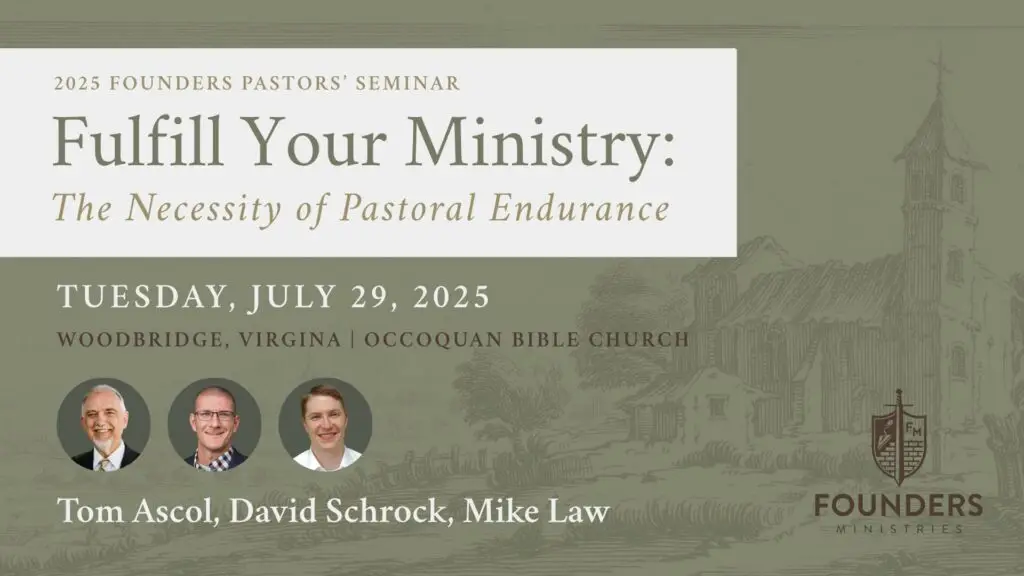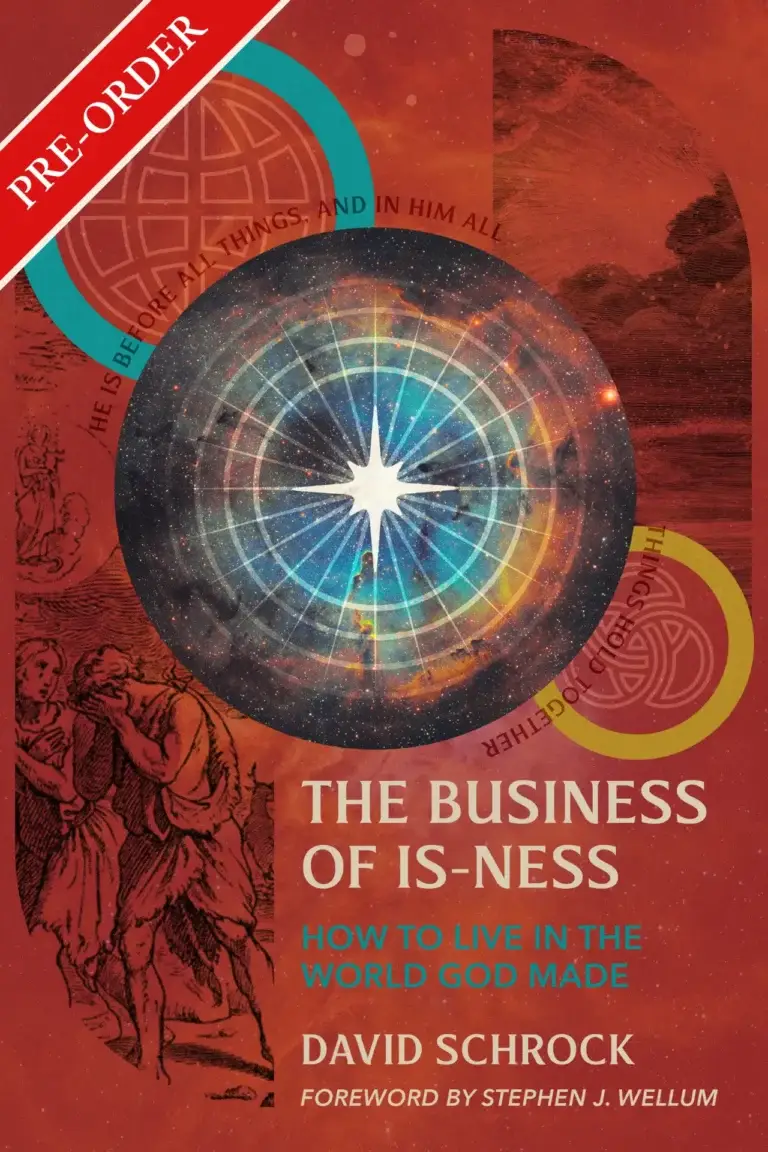A Christian world view is bubbling over with resources to satisfy the aesthetic and dramatic needs of every human person. It is more capable of doing this than any other view of the world. I am not asserting that only Christians can write good literature, tell a good story, make beautiful art, or write beautiful music. Such certainly is not the case. I am saying that the Christian view of the world—“The earth is the Lord’s and the fullness thereof”– provides such a comprehensive and inescapable view of reality that any literature or other art form that reflects that view of reality has the intrinsic possibility of satisfying the emotional and aesthetic requirements of the human spirit. I lay no claim to possessing absolute insight into this area. Rather, I am an amateur and run the risk of manifesting more aggressiveness than good sense in this assertion. Nevertheless, one need not be a great novelist or musician to discern that artistic expression is a vital area of human need. In addition, a bit of serious thought may really impress the thinker that the Christian faith embraces a multitude of possibilities for serious artistic inspiration.
Out of a staggering number of possibilities for productive interaction, elementary literary theory will provide the framework for our testing of the aesthetic power of the Christian faith. My intent is to illustrate that literary theory finds within the Christian faith a solid foundation for its assertions. One could also contend, though I will not seek to demonstrate this, that the Christian Faith provides the richest, most comprehensive background as well as the most fertile soil for the actual content of literature and other artistic expressions among the world views open to us.
This glance at literary theory obviously is not exhaustive, but only suggestive and tentative. One of the most fundamental concepts in literary theory is the idea of plot. Harry Shaw, in his Dictionary of Literary Terms has defined plot as “A plan or scheme to accomplish a purpose.” He says, “In literature, plot refers to the arrangement of events to achieve an intended effect.” He then describes a plot as “a series of carefully devised and interrelated actions that progresses through a struggle of opposing forces” (that is conflict) and conclude with a climax and a denouement. Shaw also points out the difference between plot and story. He employs the distinction of E. M. Forster. A story is a narrative of events arranged in their time sequence while a plot is a narrative of events in which the emphasis falls on causality. Forster illustrates: “The king died and then the queen died” is a story. “The king died, and then the queen died of grief” is a plot.
This definition of plot with its differentiation between story and plot focuses our attention upon causality. The idea of cause and effect is a fundamental characteristic of plot. In plot we do not see one event haphazardly following upon another event without any ultimate connection between the two things. If that phenomenon persists in a book, we soon lay it aside or place it on the coffee table which contains books that no one reads anyway. A plot must build and increase in intensity and complexity by introducing different sets of causes which have logical, though sometimes strange, effects. This same literary critic, Harry Shaw describes cause and effect in this way:
Much of what one reads is the result of cause-and -effect relations. When we read an answer to the question “Why did this happen?” We are dealing in causes. When we read the question “What will this do?” The answers involved deal with effects. A cause, therefore, is that which produces an effect, the person, idea, or force from which something results.
After giving examples of topic sentences in paragraphs which lead to cause and effect discussions within the paragraph Shaw concludes:
All life — and consequently all good literature — is concerned with why something begins to exist and why it exists the way it does. A cause is the reason. An effect is the result of the operation of a cause. Cause and effect are necessarily related: Shakespeare’s Macbeth killed Duncan because of ambition and greed; the effect of the murder is the substance of a tragedy that leads to Macbeth’s total ruin. Such a statement about Macbeth indicates that the total cause of any event is complex and involves an intricate joining of preceding forces and events; the total effects of any given cause extend beyond immediate results.
Therefore, in a good story an author will develop his plot by introducing a multiplicity of factors which we could define as causes, he will make clear to us the resultant effects of these causes, and will bring them all together finally in a coherent conclusion, every cause and every effect having its proper and well-defined relationship to the final solution of the story. The author who cannot accomplish this in a credible fashion has failed to produce a good work of literature.
I would propose that the reason our minds demand that sort of organization to a plot is that God has created the world to work that way, and his making humans in his image has established n the mind the necessity for all things finally to resolve into a worthy purpose. The Bible begins with the cause of all the stories when it asserts “In the beginning God created the Heavens and the earth.” When Scripture affirms in Ephesians 1:11 that God works all things after the counsel of his own will, and in Romans 8:28, “We know that all things work together for the good to them that love God and are the called according to his purpose,” then we indeed do know that all things have their designated place.
Such confidence results from the Christian doctrine of Providence. In itself it is an assertion that eventually all causes and all effects will resolve themselves into the purpose of God, the author of this story. No loose ends will remain dangling, no factors will have been brought in that do not play their own part in the development of the plot.
I am not saying that God has accommodated himself to our view of what plot should be; I am saying that we have inescapably produced an understanding of plot based upon the way the world is and our minds are only satisfied when the story is told as it really should be, that is, in accord with the way God made the world.
According to Shaw, a plot includes a “a series of carefully devised and interrelated actions.” An author must be careful to devise his actions carefully and interrelate them properly because he must bring them to a proper resolution. The Bible represents all the events of the world as reflecting the relationship and interaction of man the creature with God the Creator. Everything contributes to our understanding of the complexity of man’s involvement with sin and the ingenuity of his depravity but ultimately relates to the simple concept that man is in rebellion against the God who owns him. As this theme develops in complexity and force, a counter but complementary theme of redemption is introduced. It finds simultaneous development along with man’s depravity. It becomes so intricate that we see God’s redemptive purpose developing in the midst of man’s deceptive wickedness and even using it to bring the redemptive theme to a successful consummation. The story of Joseph’s being sold into Egyptian bondage by the evil intent of his brothers compels a complex interaction of emotion, outrage, understanding, and sympathy at the human level. Parallel to that, moreover, is the recognition that this very action on the part of his brothers was the plan of God for saving his chosen family from starvation. Through that preservation, the messianic nation is formed. We also see the interrelationship of these apparently disparate parts in Peter’s affirmation at Pentecost “This Jesus, delivered up according to the definite plan and foreknowledge of God, you crucified and killed by the hands of lawless men” (Acts 2:23). How much greater illustration do we need of the eventual resolution of two seemingly irreconcilable themes.
Scripture consistently presents the world story as developing a “series of carefully devised and interrelated actions.” Reality works that way, because God, though infinite and ultimately incomprehensible in his intelligence and wisdom, is consistent and purposive. The human mind cannot rest satisfied with a fallacious picture of reality; we therefore require carefully devised and interrelated actions in any story, or plot, but especially in the story.
The second element of this definition of plot insists that this series “progresses through a struggle of opposing forces.” A plot cannot progress without conflict of some kind. It may be severe internal strife on the part of a tragic hero. It may be the good guys vs. the bad guys, or the clever and sinister insinuation of a fiend trying to spoil the goodness and innocence of a heroine, or the opposing force may simply be the ridiculous and incongruous developments of a situation comedy. No matter what the story, some degree of conflict is necessary for resolution. That description exists because it is impossible for us to conceive of a tale of interest or of real accomplishment without conflict of some sort being involved.
For example, the following story would hold very little interest for the listeners (though indeed it may be extremely significant for the teller). “Yesterday I went to the post office and mailed my letters and went back home and drank a cup of coffee. I also read the paper and really had a nice day.” Now it is wonderful to have a day like that, but not too wonderful to tell about it. Consider this option: “While on the way to the post office yesterday I had a flat tire. When I stepped out of the car, I was abducted by two escapees from the State mental asylum who thought that I was an airplane. They were convinced that they could make a quick trip to beautiful downtown Shawnee, Oklahoma, if they could only find the proper runway from which to take off. I could not convince them that I wasn’t an airplane and so only escaped the trip to Shawnee by convincing them that I had already been flying all day and my arms were too tired for another trip. Eventually they were taken into custody by a couple of officers from the asylum who refused to believe that I too was not a resident of the asylum since I had spoken so convincingly about having flown all day. When they discovered their mistake, they were so chagrined that they fixed my flat tire and treated me to a cup of coffee. By this time the post office was closed and I had to wait until the next day to mail my letters. This upset my wife who was sending a special birthday card to her sister. That evening she had to call and explain why the card would not be on time. In the conversation, she was reminded that the birthday was not till next week, and was relieved that she had not been so early with the card as to muffle its joyful impact. She forgave me and was happy I had had such an unusual day.”
This is hardly an engaging literary style but the story is worth telling and the element of conflict provides a greater degree of interest than the lack thereof. One who has read Tolkiens’ Lord of the Rings, or Lewis’ Chronicles of Narnia or his Space trilogy or, Cormack McCarthy’s Blood Meridian can readily see how numerous are the possibilities for developing conflict as a necessary, literary device. The element of conflict is a continuing reality in the Scripture from the subtle but vicious temptation of Eve by the Serpent until the twentieth chapter of Revelation when “the devil who had deceived them was thrown into the lake of fire and brimstone where the beast and the false prophet were, and they will be tormented day and night forever and ever” (Revelation 20:10). The walk of the Christian is represented as a walk of conflict in which he wears the whole armor of God, for his warfare is against principalities and powers in heavenly places.
So, on the one hand, the biblical record grandly illustrates this literary principle; but even more important, it is the truth at the back of this biblical conflict that has given rise to our understanding that a plot progresses through a struggle of opposing forces. We feel it in our bones and see it all around us, because that is the way things are.
The next element of plot is climax. The climax is that point in the play, in which it becomes clear that the central motive will or will not be successful. It becomes clear which force is going to emerge victorious in the conflict. One characteristic of many modern plays and movies is the significant absence of climax and denouement. This may not be a weakness in itself but is merely a confession on the playwright’s part that he does not know which side of the conflict should win and much less how the victory would finally be resolved into a satisfying conclusion. We see such a phenomenon in the movie of some years back called Kramer vs. Kramer. It ends the only way it could end; but the audience has some degree of frustration because both parents had compelling characteristics that won their sympathy and both had significant weaknesses. However, the very fact of frustration with that sort of ending is evidence that one’s mind does not stop there but recognizes the need for absolute judgment somewhere that will make clear what really should have happened.
The same thing would be true of the trial of Jesus if it were left at the stage of his condemnation. “When He was reviled, he reviled not in return. When he suffered, he did not threaten, but he trusted to him who judges justly.” That is true not only in the case of the trial of Jesus, but it is an aesthetic requirement of our minds. When climax fails to materialize in the story, our minds even unwittingly commit that judgment to the one who judges justly.
This tendency, in fact makes us restless until we can find answers to the unresolved questions that plague us. The question that we all have asked, “Did Scarlet get Rhett back or did she really not deserve to have him” gave rise to an attempt to resolve that aggravating uncertainty.
There are hundreds of examples, however, in which the climax is set forth very forcefully in the story, and the author who is successful in it and makes all the readers or onlookers feel that it justified, has the matchless gift of creation. Climax in the biblical account and in the real story of the world comes in the cross. When Jesus cried in a loud voice, “It is finished” the climax to all of history had come. In the cross the conflict between Jew and Gentile was over, God and man were reconciled, death was turned backwards, and all the demonic powers arrayed against God were put to flight. This is the victory that must occur or the world is senseless; this is the victory that must occur or every high hope and aspiration of our most noble moments is crushed to the ground and all is vanity. That unspeakable conflict entailed in the highest of all God’s creatures rebelling against the holy, righteous, and just creator and involving another of God’s high creations, man, in the rebellion came to its climax in the cross. That part of literary theory which demands climax within the plot finds its most irrefutable rationale in God’s action in the cross.
The final element of the plot is denouement. This word refers to the solution or the final untangling of the intricacies of a plot. What are the implications of a victory that is won. The made-for-TV lawyer Perry Mason did this by explaining how he discerned who was the real culprit and tying all the bits of evidence together for the astounded viewer. In Tolkien it is done by describing the righteous rule of the rightful king of middle earth, the cleansing of the shire, and the fading away of yesterday’s heroes with the sense that their purpose had been well fulfilled. Lewis sees all history culminating in the land of Narnia, and a train wreck, perhaps interpreted as tragic by those in England was not tragic at all but merely the door to Narnia, and more than Narnia, Aslan’s own country. Denouement comes in the Bible story as Christ is resurrected to defeat death and its causes and returns in glory and splendor, and he will display such matchless beauty and such awesome power that every knee shall bow of things in heaven and things in earth and things under the earth, and every tongue shall confess that Jesus Christ is Lord to the Glory of God the Father. Again, the final issue of this is described for us in the book of the Revelation.
Then the angel showed me the river of the water of life, as clear as crystal, flowing from the throne of God and of the Lamb down the middle of the great street of the city. On each side of the river stood the tree of life bearing twelve crops of fruits, yielding its fruit each month. And the leaves of the tree are for the healing of the nations. No longer will there be any curse. The throne of God and of the Lamb will be in the city, and his servants will serve him. They will see his face, and his name will be on their foreheads. There will be no more night. They will not need the light of a lamp or the light of the sun, for the Lord God will give them light. And they will reign for ever and ever. – Rev. 20:1-5
This conclusion gives literary satisfaction and objective justification to the thesis of our text: “The earth is the Lord’s and the fullness thereof, the world and those who dwell therein.” Holiness and righteousness will inhabit the final resolution which will be brought about because “the Lord of hosts, … the King of glory” has come in. This is the model for and the foundation of all denoument. Nothing but such an infinitely excellent conclusion to all things can satisfy the mind. It is that story-ending than which a greater can not be thought. It is the truth.





























